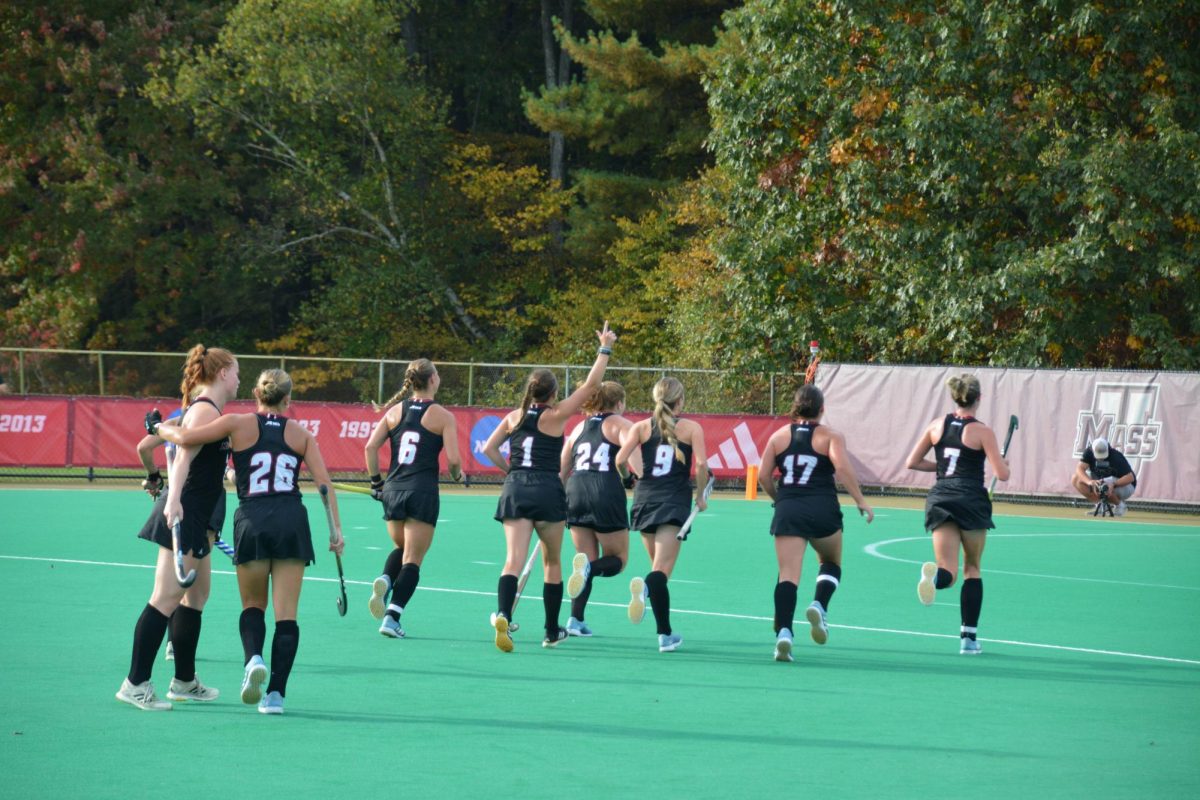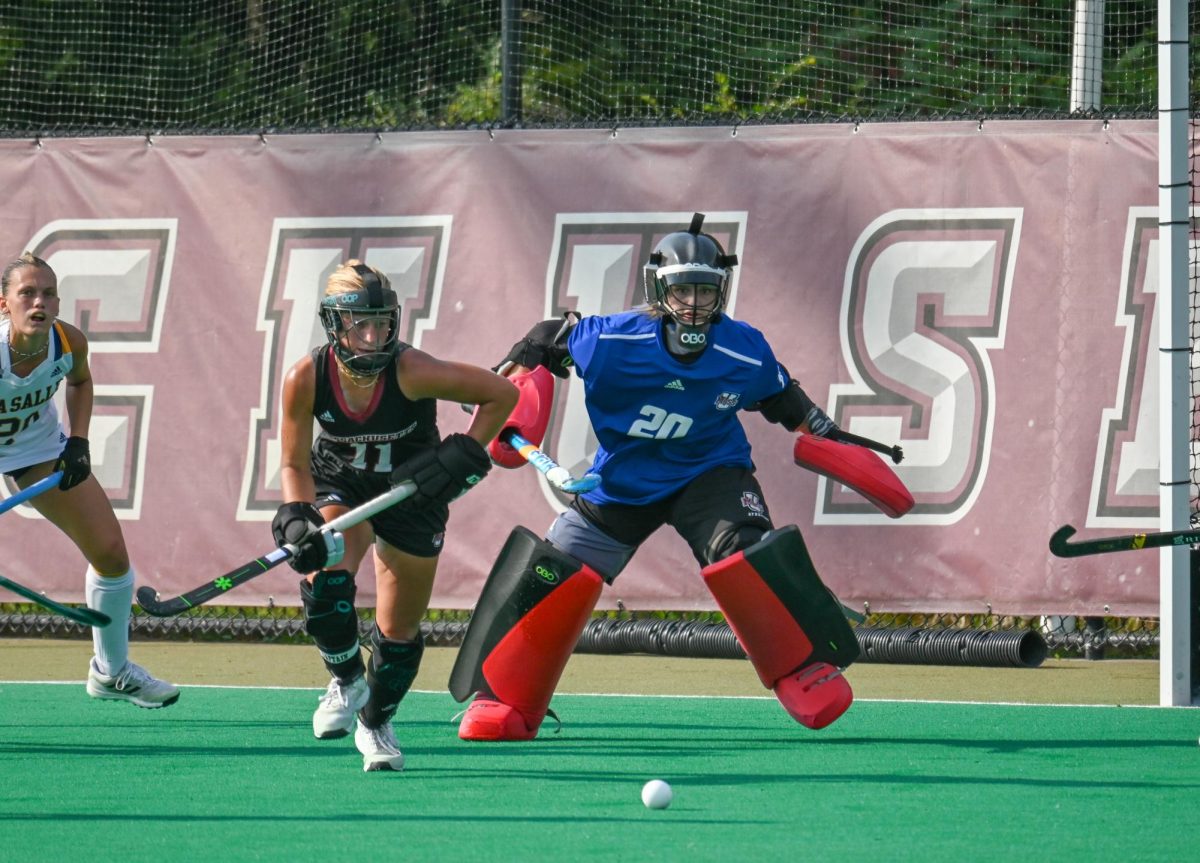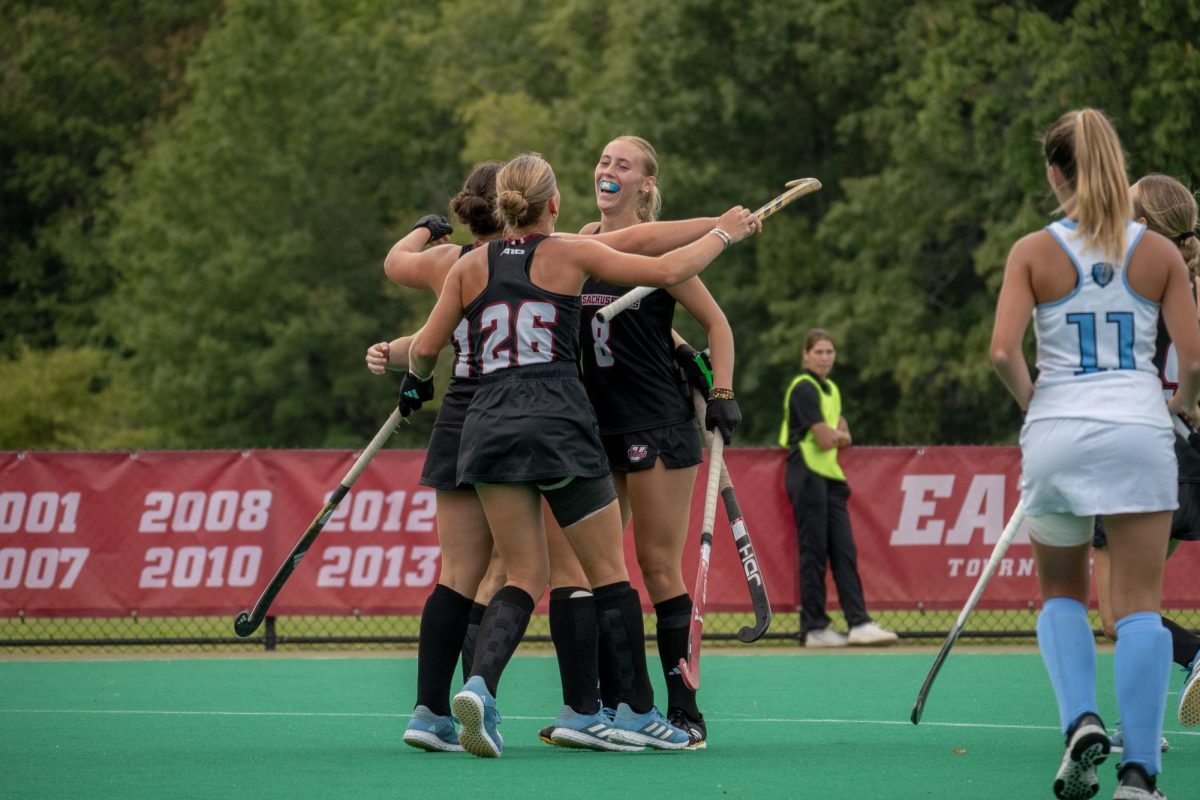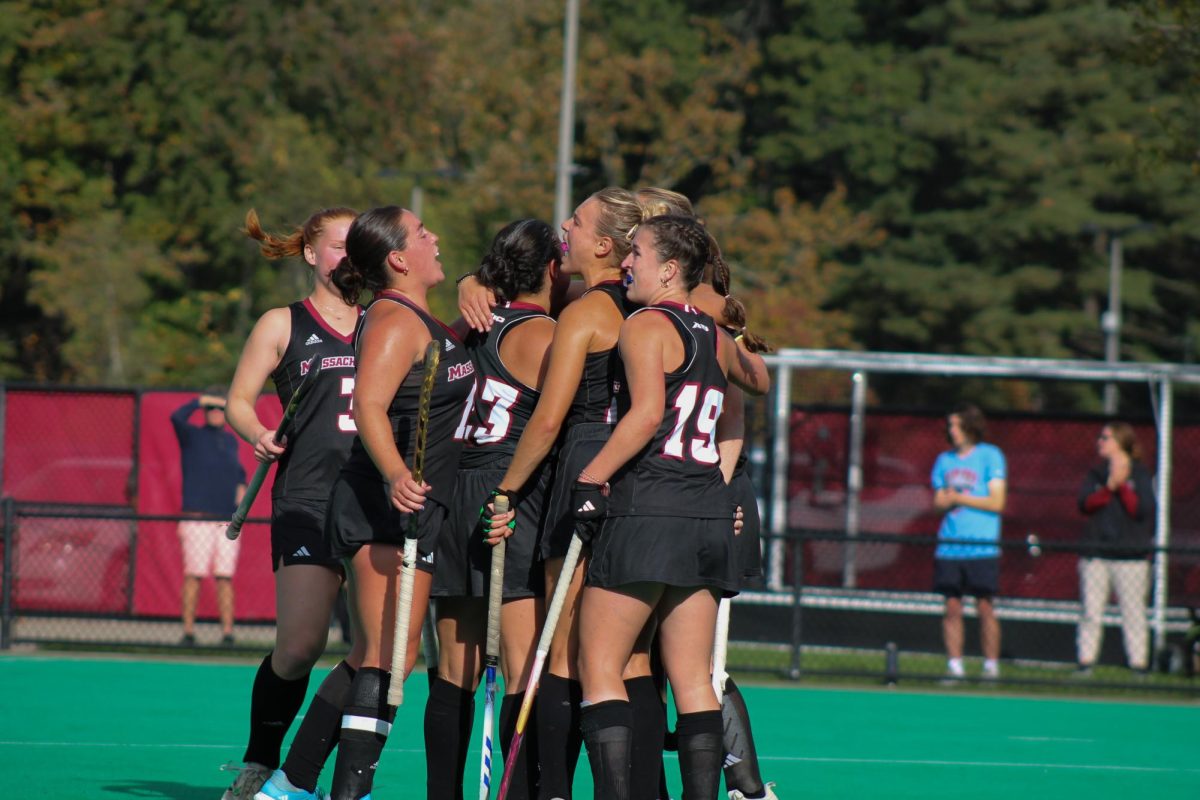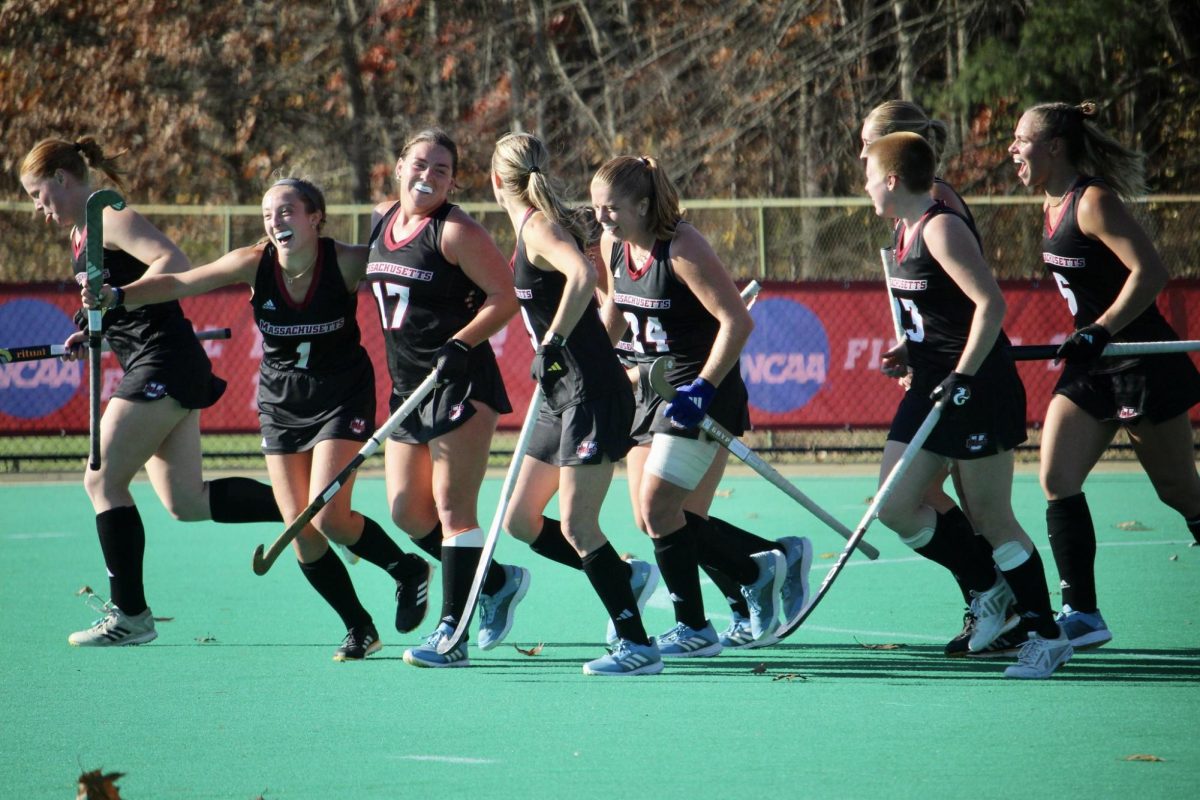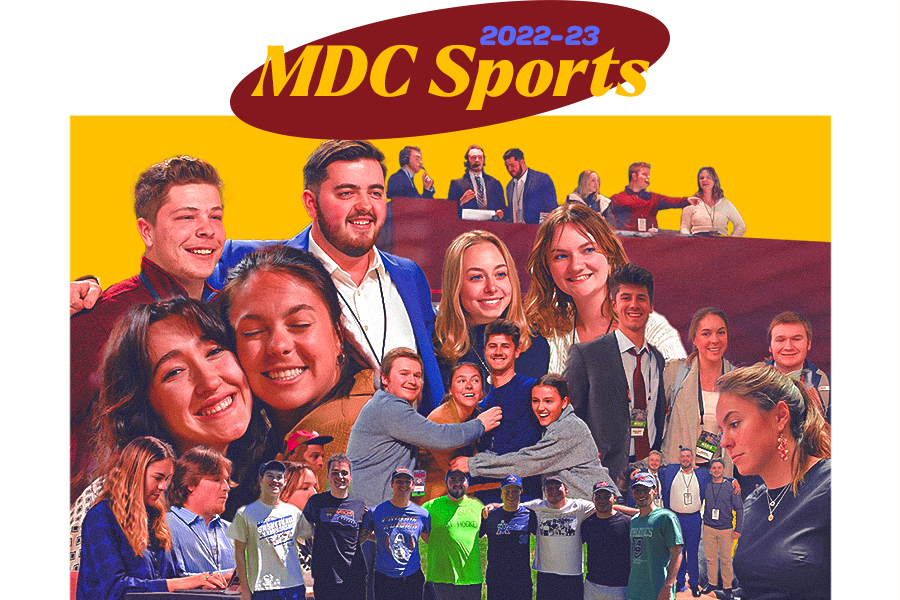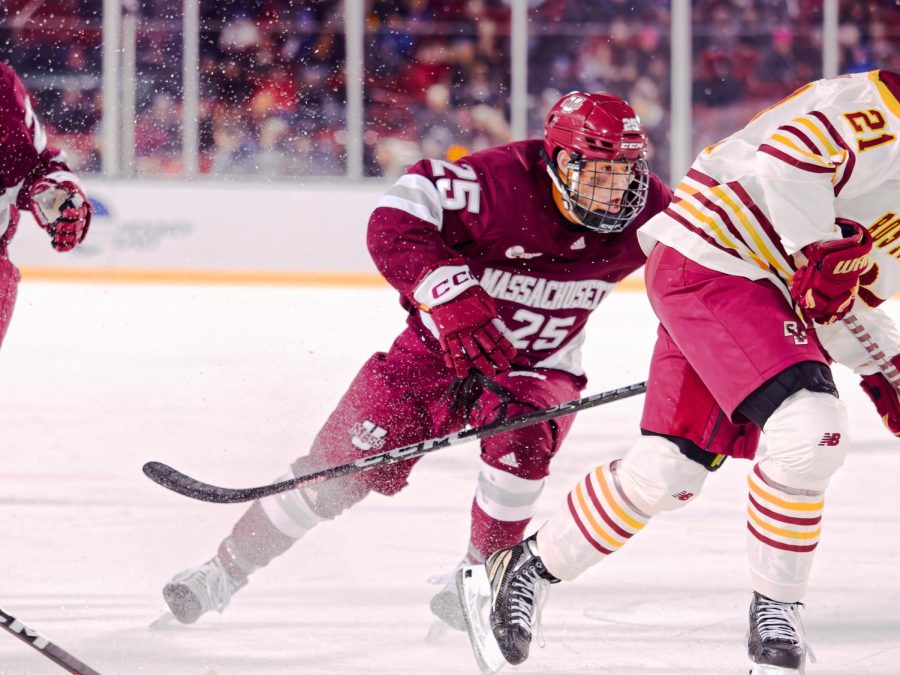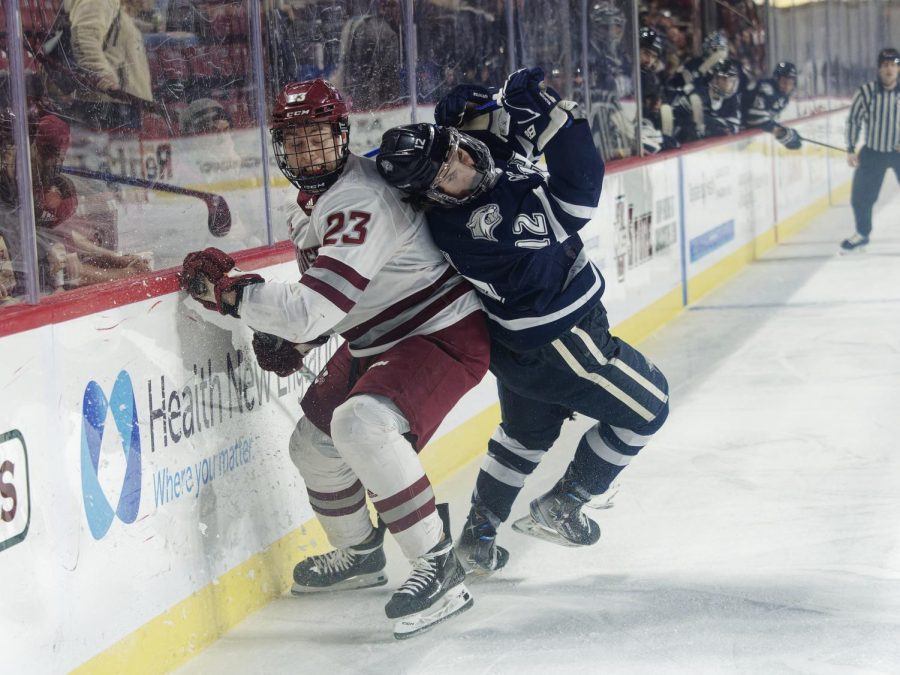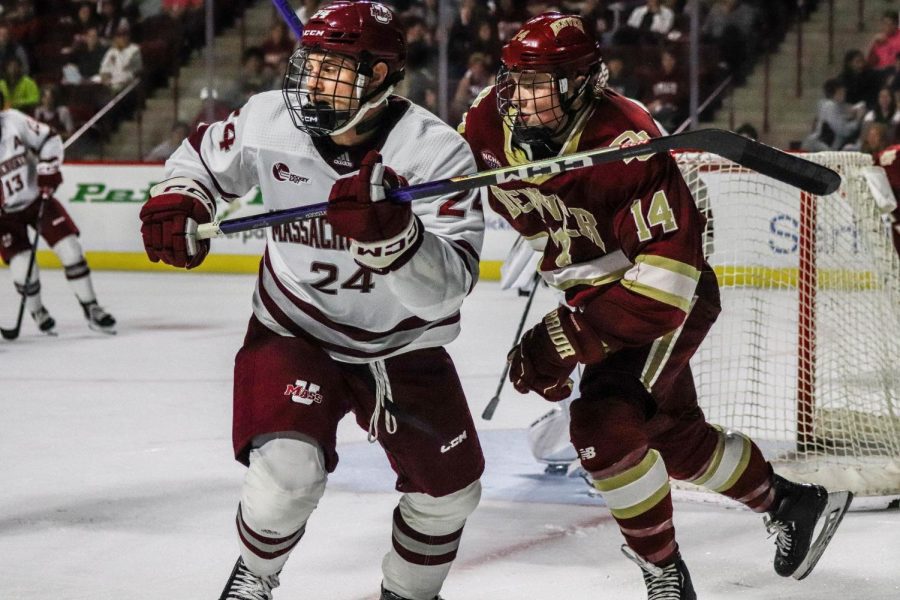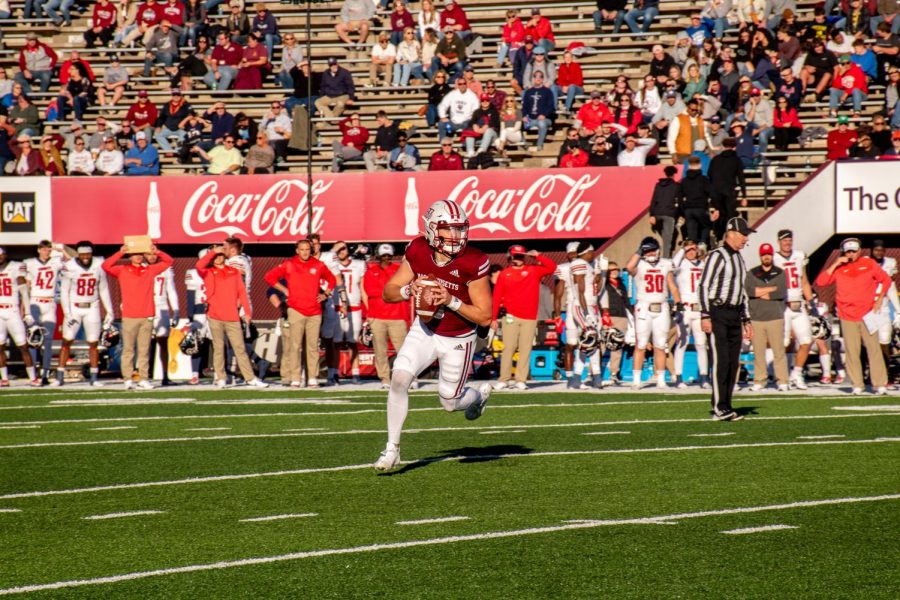The Massachusetts field hockey team can start the 2010 season knowing that how it finishes will be much more important than how it starts. That sentiment holds much truth, in great part thanks to the structure of this season’s field hockey schedule.
UMass will play 12 of its 19 games against non-conference opponents in 2010. If it seems like the non-conference schedule is a little heavy, it doesn’t compare to last year’s slate, when 15 out of 21 teams the Minutewomen played were not in the Atlantic 10.
The schedule’s unbalance sets up an odd situation where UMass can mathematically reach the NCAA tournament with a losing record; something unheard of in any other sport besides field hockey. In a disastrous scenario for the NCAA, the Minutewomen could go winless during the first part of the regular season, still finish the A-10 schedule with a 4-3 record, win the conference championship and earn a tournament berth with a 6-15 season.
“We’re trying to keep [our tough non-conference schedule] in perspective, and our focus is on the A-10 … If the players get too wrapped up with the wins and losses, then we have to get in touch with what we’re here for and what we’re trying to build towards,” UMass coach Justine Sowry said.
The conference schedule is much more important in field hockey than it is in bigger sports because only 16 teams qualify for the NCAA tournament and the A-10 isn’t strong enough to have any at-large bids.
The Maroon and White will play six NCAA tournament teams during its non-conference schedule. Besides being good preparation for the A-10 schedule, the out of conference matches don’t affect UMass’ chances of advancing in the postseason through the conference, win or lose.
So, why even keep score?
Even a better question, why so many non-conference games?
The NCAA schedule allows for teams to play everyone in their conference once.
The only problem is that since there are only 79 field hockey teams in the nation, the conferences are very small. The biggest conference is the Colonial Athletic Association with nine teams while the rest go as low as six teams.
“It’s just the way it’s been and a lot of conferences are like that,” Sowry said of the current format. “It is what it is, and we deal with that.”
The way the schedule is set up now, the bigger conferences are the only ones benefiting. The Atlantic Coast Conference has been sending five of its six teams to the NCAA tournament over the last few years.
Boston College is one school that can thank the current system for allowing it to advance past the ACC tournament as its 1-4 conference record is overshadowed by a No. 14 RPI and a 12-3 non-conference record.
And yet BC gets to make the 16-team field just because of the conference it plays in.
The NCAA schedules every sport so that at least half the games are against conference opponents, and there’s no reason why the same shouldn’t be true for field hockey.
There are three ways to fix the problem. The NCAA can either shorten the regular season, allow conferences to have a certain number of home-and-home games against opponents in the same league or make the conferences bigger.
The most practical solution is to switch out two or three non-conference games for more A-10 games so it fills about half the schedule. One of the ways it can happen is to make those extra games part of a home-and-home series.
Having to play teams like Richmond or La Salle twice seems to be more meaningful than a game against American, a team UMass probably won’t play unless they get paired up in the NCAA tournament.
Teams in other sports go into a non-conference schedule with one of two goals in mind: either to beat up on smaller schools and inflate their winning percentage, or play the toughest teams possible in hopes of raising their RPIs.
The Minutewomen are trying to do their part in making the A-10 worthy of being a two-bid conference by playing a tough national schedule and consistently earning itself a high RPI. However, the rest of their league doesn’t have the coaching pedigree of Sowry or the ability to build an elite program.
The A-10 simply is not a powerhouse when it comes to field hockey at the moment, and it will have to live with only one bid to the NCAA tournament for the time being.
While Sowry believes that having so many non-conference opponents in her team’s schedule allows adequate preparation for the A-10 schedule, you know there’s something wrong with a sport when more than half the games carry the same meaning as friendlies in World Cup soccer or four exhibition games in football.
Adam Miller is a Collegian columnist. He can be reached at [email protected].

